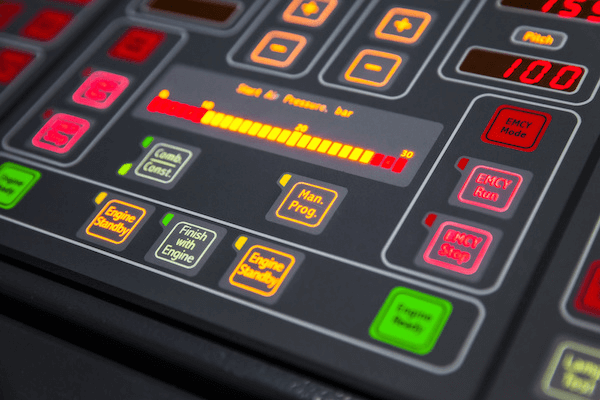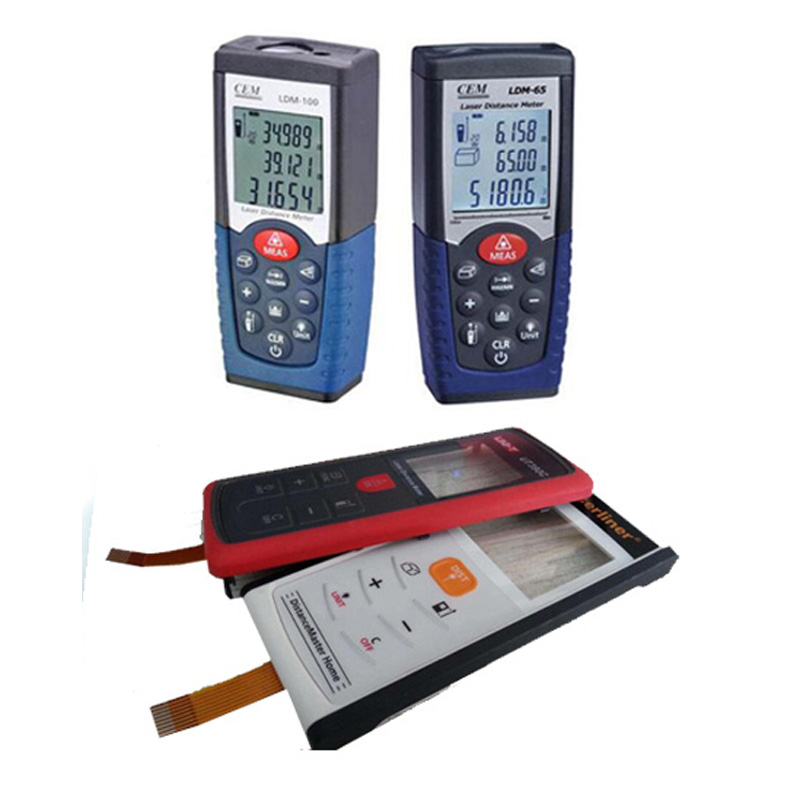10 efficient ways to integrate membrane switch into industrial systems
Wiki Article
The Manufacturing Refine Behind Membrane Layer Switch: What You Need to Know
The production process behind membrane switches combines cautious layout, material selection, and top quality control. It starts with recognizing the ins and outs of membrane switch style and progresses via different stages, consisting of material selections and printing methods. Each stage plays an important function in making certain capability and sturdiness. The complexities of layer construction and the strenuous testing standards might reveal insights that are not instantly apparent. What exists past these fundamental components?Recognizing Membrane Change Style
Although membrane buttons might show up straightforward initially glance, their design includes intricate factors to consider that assure functionality and longevity. The design procedure starts with a complete understanding of individual needs, including the interface's designated application and ecological aspects. Ergonomics is a crucial element, as the layout has to assist in convenience of usage while making certain that responsive responses fulfills user expectations.Moreover, the layering of elements, such as visuals overlays, sticky layers, and conductive traces, have to be exactly engineered. membrane switch. This layered arrangement not only influences the switch's responsiveness but additionally influences its long life. Focus is offered to the sealing techniques utilized to shield versus moisture and dust, which can compromise performance. Furthermore, layout factors to consider reach aesthetics, where color design and visual quality boost individual experience. Eventually, the style of membrane changes equilibriums performance, user experience, and longevity, making sure that they satisfy the demands of numerous applications successfullyMaterials Used in Membrane Layer Switch Manufacturing
When choosing materials for membrane button production, it is necessary to contemplate both efficiency and resilience. The primary products consist of polyester and polycarbonate films, which provide adaptability and strength. These movies are frequently coated with glue to assure correct bonding to substratums. Conductive inks, normally made up of silver or carbon, are crucial for developing electrical links within the switch, enabling dependable operation.Additionally, a protective layer, such as a tough layer, is frequently used to improve scratch resistance and durability. The option of backing material, such as acrylic or foam, can significantly impact the button's tactile feel and overall user experience. Additionally, various environmental variables, including temperature and humidity, should assist product choice to guarantee peak efficiency in particular applications. Inevitably, the best combination of products adds to the membrane layer switch's functionality and life-span, making informed selections important for manufacturers.The Printing Process: Creating Video and Text
The printing procedure in membrane layer button manufacturing plays a substantial function in producing premium graphics and message. Different visuals layout methods are used to assure visual charm and capability, while mindful ink choice methods are necessary for longevity and performance. Understanding these components is essential for attaining ideal lead to membrane layer button design.Graphic Layout Techniques
Graphic style strategies play a crucial role in the printing process of membrane buttons, as they specify how graphics and message will ultimately appear on the end product. Reliable graphic layout entails the calculated usage of shades, designs, and typefaces to boost readability and visual allure. Designers usually make use of vector graphics for scalability, making certain that pictures continue to be sharp at different dimensions. In addition, attention to comparison and positioning is essential, as it influences individual interaction and visual top quality. The consolidation of branding aspects, such as logos, must be managed with like maintain brand name integrity. In general, thoughtful visuals style strategies add significantly to the capability and attractiveness of membrane layer switches, affecting user experience and item performance.Ink Option Methods
Picking the suitable ink is necessary for accomplishing the preferred aesthetic high quality and sturdiness in membrane switch production. Different ink kinds are utilized, including solvent-based, water-based, and UV-curable inks. Each type offers unique attributes, such as attachment, adaptability, and resistance to ecological variables. Solvent-based inks are frequently favored for their toughness and vibrant shades, while water-based inks are more eco friendly yet might have restrictions in bond. UV-curable inks give rapid treating and robust efficiency. In addition, color matching methods assure that the chosen inks line up with layout requirements. Ultimately, the choice of ink should think about variables such as application method, substrate compatibility, and end-use demands to accomplish exceptional outcomes in membrane layer button graphics and text.Layer Building and Setting Up

Product Option Refine
A cautious choice of products is necessary in the manufacturing process of membrane layer switches, as it directly affects performance and durability. The main materials made use of include polyester, polycarbonate, and numerous conductive inks. Polyester is typically favored for its excellent resistance to chemicals and abrasion, making it appropriate for harsh atmospheres. Polycarbonate, on the other hand, provides premium quality and effect resistance, which is helpful for applications calling for presence and robustness. Conductive inks, usually composed of silver or carbon, are vital for producing reliable electrical pathways. Furthermore, the choice of sticky products impacts the general stability of the button - membrane switch. Assessing elements such as environmental exposure, tactile comments, and visual requirements guides producers in selecting the ideal products for their specific applicationsLayer Attachment Strategies
Sticking layers in membrane button construction is a crucial procedure that assures performance and longevity. Various adhesion techniques are utilized to secure optimal bonding in between layers, which usually consist of the usage of adhesives, warmth, and stress. Pressure-sensitive adhesives (PSAs) are commonly made use of for their simplicity of application and immediate bonding abilities. In addition, thermal bonding methods can be used, where warmth is utilized to trigger adhesive properties, securing a strong bond. The option of attachment method greatly why not look here depends upon the products entailed and the details application demands of the membrane button. Correct placement and consistent application of adhesives are necessary to protect against flaws, securing the switch operates properly throughout its desired lifespan.Quality Assurance Measures
Assuring quality control during the layer building and construction and assembly of membrane switches is important for keeping efficiency and reliability. This procedure normally entails numerous important steps, including comprehensive inspections at each phase of production. Producers use sophisticated screening techniques, such as peel examinations and attachment evaluations, to confirm the integrity of layer bonds. Furthermore, aesthetic evaluations are performed to determine any kind of flaws in printing or material disparities. Ecological conditions, such as temperature and moisture, are meticulously kept an eye on to guarantee excellent curing and bond. Furthermore, routine calibration of equipment helps maintain accurate production standards. By implementing these quality assurance procedures, makers can greatly lower the threat of product failing, ensuring that the last membrane layer switches over meet the called for requirements and client assumptions.visit this site right here
Examining and High Quality Control Procedures

Developments in Membrane Layer Switch Modern Technology
As innovations in modern technology remain to progress, membrane switches are gaining from ingenious developments that boost their performance and user experience. One noteworthy advancement is the assimilation of capacitive touch innovation, which enables more user-friendly and receptive interface. This change check my blog not only enhances visual appeals however likewise minimizes mechanical deterioration, extending the life expectancy of the switches.Additionally, improvements in graphic overlay products have caused enhanced resilience and resistance to environmental elements such as wetness and UV light. These products currently supply enhanced quality and illumination, further boosting the aesthetic appeal.Furthermore, the unification of clever innovation is changing membrane layer switches into interactive control board, allowing connection with IoT gadgets. This connectivity cultivates a smooth individual experience, leading the way for applications in various industries, from health care to consumer electronic devices. Jointly, these developments placement membrane switches as essential components in contemporary gadget style.Often Asked Concerns
The length of time Does the Membrane Layer Switch Manufacturing Refine Take?
The period of the membrane layer switch production procedure can differ significantly. Factors such as complexity, materials used, and manufacturing quantity impact timelines, with regular production ranging from a few days to a number of weeks for completion.What Are the Common Applications for Membrane Switches?
Membrane buttons are commonly utilized in various industries, consisting of automobile controls, home devices, medical tools, and consumer electronics (membrane switch). Their flexibility and sturdiness make them ideal for applications requiring easy to use user interfaces and reputable performance in varied settingsCan Membrane Switches Be Custom-made for Particular Requirements?

What Is the Life-span of a Normal Membrane Switch?
The lifespan of a typical membrane layer button varies, but generally, it ranges from 1 to 5 million cycles. Factors such as use, environment, and material quality significantly influence longevity and general efficiency over time.

Are Membrane Layer Switches Over Eco-friendly?
The environmental friendliness of membrane switches differs. Some products utilized may not be recyclable, while others can be environment-friendly. The total impact depends on manufacturing products and practices, demanding cautious consideration during option and disposal. The production procedure behind membrane layer changes combines cautious design, material selection, and high quality control. It begins with understanding the intricacies of membrane layer switch layout and advances via different phases, including product choices and printing strategies. When selecting products for membrane layer switch manufacturing, it is crucial to consider both performance and sturdiness. A cautious option of materials is crucial in the manufacturing process of membrane layer switches, as it directly influences performance and longevity. The selection of attachment technique greatly depends on the materials included and the specific application requirements of the membrane layer switch.Report this wiki page